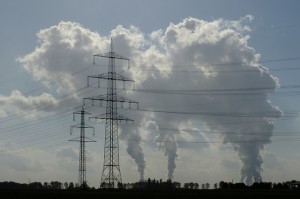Research in the field of particle and fiber toxicology doesn’t often hit in the headlines, but these researchers have been vital in uncovering human health ‘black holes’ – illness-causing issues on a grand scale. We take a look into the field, some of its history and what’s still left to uncover.
There’s a material that humans have been using for perhaps as long as 5,000 years. It absorbs sound effectively, is resistant to heat and fire, as well as electrical and chemical damage, and it’s affordable too. By the mid-20th century we were using it in everything from concrete, bricks and pipe insulation, to lawn furniture and flooring. In Japan it was even used in the process of rice production.
There was just one problem – this material also causes serious illnesses. In particular, malignant lung cancer, mesothelioma and a type of pneumoconiosis. I am, as you may have guessed, talking about asbestos.
The dangers of asbestos are now almost universally known. In the UK, as in other countries, there are companies set up specifically to survey buildings for asbestos and safely remove it. Even so, in 2010, the World Health Organization estimated that about 125 million people around the world are exposed to asbestos in the workplace. They also attributed 107,000 deaths a year to asbestos-related illnesses.
But how was the toxicity of asbestos discovered? And how do we know that materials we use now couldn’t later be shown to have similar properties?
The dangers were known, but people weren’t protected

As far back as the first century AD, Pliny the Younger reportedly wrote that slaves who mined and worked with asbestos became ill. It wasn’t until the 1920s and 30s, however, that clear clinical evidence of the dangers was produced.
“Medical men in areas where asbestos is manufactured have long suspected the dust to be the cause of chronic bronchitis and fibrosis.” So said W.E. Cooke in a case report published in the British Medical Journal in 1924, in which he analyzed the lungs of a woman who had worked in an asbestos factory for most of her life.
Cooke published a second case report in 1927, in which he named the condition caused by asbestos as ‘pulmonary asbestosis’. His work was followed shortly after by the Merewether and Price report, which examined 363 workers in asbestos textile mills in the UK.
They found that one in four of the workers had signs of asbestosis, and that if they’d worked at the trade for more than 20 years the proportion was 80%. In their report, they also included a complete description of how the dust hazards could be prevented, including the important element of warning workers of a “sane appreciation of the risk”.
Despite this, and subsequent work from this period onwards, asbestos continued to be used regularly in the UK and abroad until the 1980s. Much asbestos use in the UK was banned in 1985, with further legislation put in place in 1999. It’s also banned now in many other countries, though not – rather surprisingly – in the United States.
It has taken over 50 years, for asbestos use to be phased out, and even now it’s still affecting the health of millions of people around the world. New materials are being discovered or invented all the time and put into everyday use, so how can we avoid something like the story of asbestos happening again?
Preventing the ‘asbestos of the future’
In a commentary in Particle and Fibre Toxicology last year to highlight the career of Ken Donaldson, Flemming Cassee and Paul Borm recognized Donaldson as “one of the few particle toxicologists left who originally saw and investigated the three major problems in particle toxicology”. These were coal-mine dust, quartz and asbestos.
Though Donaldson originally worked on these three major problems, his subsequent career history mirrors the change that has taken place in the field of particle toxicology – the field that is so vital to helping us prevent another asbestos-type material from affecting people’s lives.
Donaldson, who was the co-founding Editor of Particle and Fibre Toxicology, contributed significantly to the development of toxicology of nanomaterials, as well as studying the effects of air pollution. To give an idea of the impact of his work, in Cassee and Borm’s words “the nanoworld was shocked to see that the hallmark of nanotechnology (carbon nanotubes) could behave like asbestos if certain conditions were met”. (You can read the article that shocked the ‘nanoworld’ here).

Air pollution is something that almost all of us have to deal with, while nanomaterials – particularly carbon nanotubes – are everywhere these days. You can find them in everything from tennis rackets to bike parts, and while you’re not likely to breathe in part of your bike, for the people making the bike, it might be a different story. It’s important that research continues so such materials can be appropriately regulated.
Work in the field of particle and fiber toxicology isn’t often in the news, and it may not be widely recognized as a ‘hot topic’, but you can bet that the work of people in this field has and will save lives.
I, for one, certainly have a new appreciation for the need of this field and the impact it can have. Perhaps it would be wise for us all to nurture that sort of appreciation. After all, the problems with asbestos were known about long before policies made its use more difficult. While being aware of the problem is half the battle, doing something with that awareness is equally important.
Particle and Fibre Toxicology is an open access journal for new scientific data, hypotheses and reviews on the toxicological effects of particles and fibers, which celebrates its 10th Anniversary this December.
You can watch an interview with Flemming Cassee on the Biome website.
Comments